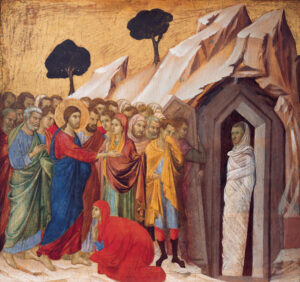Before returning to the Johannine stories containing the words and deeds of Nicodemus, I must digress briefly to discuss the issue of dependence. The Gospel of John contains countless mysteries, many of which can keep a scholar busy for a lifetime. Who actually wrote the gospel? What were his sources? Who is the Beloved Disciple? Can we find seams (aporias) that might reveal both sources and later redaction?
These puzzles may entertain the mind, but they can often become dark, twisting, endless rabbit holes. I would offer here a rather imperfect analogy to the so-called hard sciences in which we may not understand certain things (yet), but rather than beat our heads against the wall, we measure what we can and try to derive workable models and submit modest predictions. With that in mind, let’s look at larger patterns — looking less at syntax and semantics and more at pragmatics and narrative frames.
Literary Dependence

As you probably know from my previous posts on Vridar, I believe that the author of John knew the Synoptics — especially Mark — and used them as source material. Anyone who argues for absolute independence must either ignore or explain the astonishing fact that John re-invented the gospel genre. We have discussed in earlier posts the ways in which John follows narrative boundaries already laid out in Mark.
The author of the Fourth Gospel has built his own road, but he was clearly following already established paths. As an example, we have the narrative “Dead Zone” between Jesus’ burial and the discovery of the empty tomb. The curtain closes as the tomb is sealed. Nothing happens in the story for about 36 hours. The curtain lifts, the sun rises, and the truth is revealed.
Many scholars posit the existence of “traditional material” that lies behind the Fourth Gospel. They insist that John’s usage of such unknown, unseen, never-referred-to sources is more likely than John’s appropriation of and embellishment upon existing Markan frames. Typically, scholars will demonstrate the probability of independent, unique Johannine sources by means of declaration rather than explanation.
However, I would argue that the silence in the Dead Zone represents a Markan frame adhered to by John. We can more simply explain it as an artifact of literary dependence than as a coincidence among pre-existing (yet somehow always magically independent) sources. The silence signals dependence. Yet despite this shared silence, we can find clues that John ached to say more.
The Raising of Lazarus and the Dead Zone
In fact, we can find the missing action between the burial and Sunday sunrise somewhere else. What are we missing from Jesus’ resurrection stories in Mark and John? Continue reading “What Is the Purpose of the Nicodemus Stories in John? (Part 2)”
